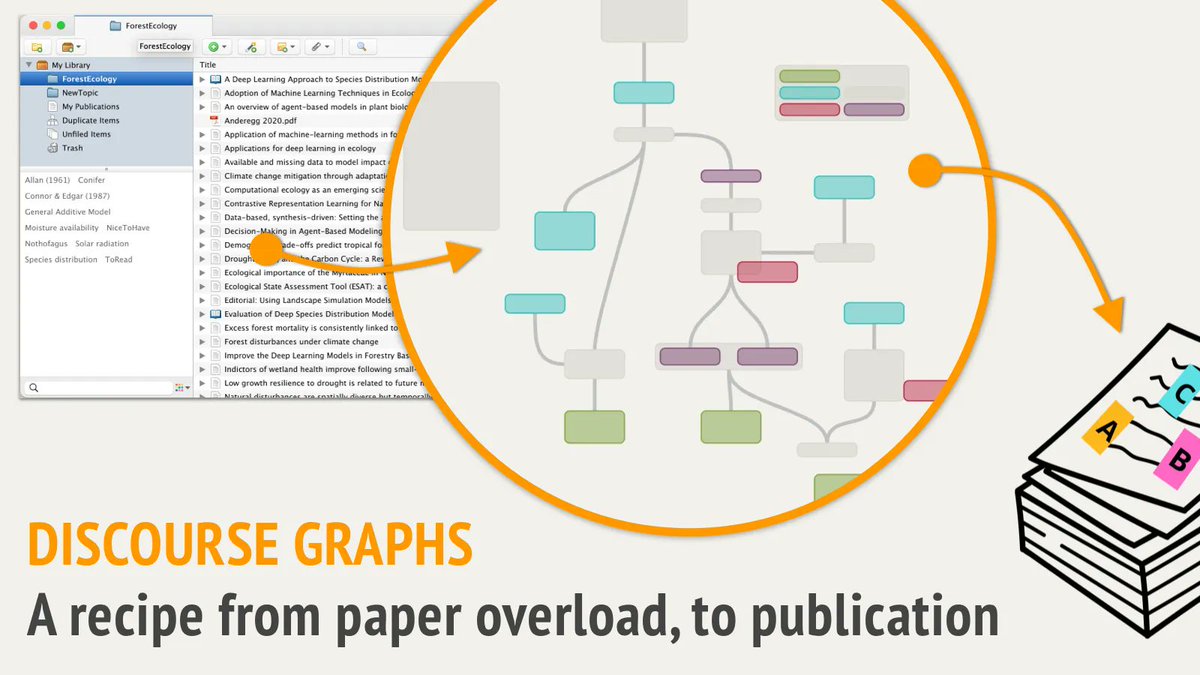
Tired of the same old bar graphs and line plots, #ScienceTwitter?
Here are 5 lesser-known but powerful graphical methods for visualizing your next publication.
👇
Here are 5 lesser-known but powerful graphical methods for visualizing your next publication.
👇

1 – SANKEY DIAGRAM
Great for displaying dynamic processes or flows in a graph.
Example: Flow of immigrants and emigrants to and from a country.
The favourite diagram of marketers optimizing conversion rates of their customers.
Great for displaying dynamic processes or flows in a graph.
Example: Flow of immigrants and emigrants to and from a country.
The favourite diagram of marketers optimizing conversion rates of their customers.

2 – TERNARY DIAGRAM
Measured 3 components of something and they sum up to a constant (e.g. 100%)?
Then display this three dimensional data in a two dimensional triangle, without loosing any information.
Example: Soil Composition or relative sources of Income
Measured 3 components of something and they sum up to a constant (e.g. 100%)?
Then display this three dimensional data in a two dimensional triangle, without loosing any information.
Example: Soil Composition or relative sources of Income

3 – VIOLIN PLOT
Replace boring box plots with sexy violins.
Box plots don't show the distribution of your data.
Especially multiple peaks are easily visible with a violin but hidden by a box plot.
Replace boring box plots with sexy violins.
Box plots don't show the distribution of your data.
Especially multiple peaks are easily visible with a violin but hidden by a box plot.

4 – SPIDER CHART
One of the few graphs correctly representing high dimensional (3 or more) data.
But it can only display a few points at a time.
Alternative uses are to display periodical data, like average temperature across months.
One of the few graphs correctly representing high dimensional (3 or more) data.
But it can only display a few points at a time.
Alternative uses are to display periodical data, like average temperature across months.

5 – CHORD DIAGRAM
It shines when you need to display (numerical) relations within a group or between multiple groups.
But: Add too much data and it becomes an impressively looking mess.
(Yes, biologists, I am talking to you and your beloved protein interaction networks)
It shines when you need to display (numerical) relations within a group or between multiple groups.
But: Add too much data and it becomes an impressively looking mess.
(Yes, biologists, I am talking to you and your beloved protein interaction networks)

Enjoyed this content?
If so, let me introduce myself,
I am Ilya and this account helps academics to make their journey more effortless.
Follow for hacks on productivity, organisation, mental health and academic writing.
If so, let me introduce myself,
I am Ilya and this account helps academics to make their journey more effortless.
Follow for hacks on productivity, organisation, mental health and academic writing.
• • •
Missing some Tweet in this thread? You can try to
force a refresh
















